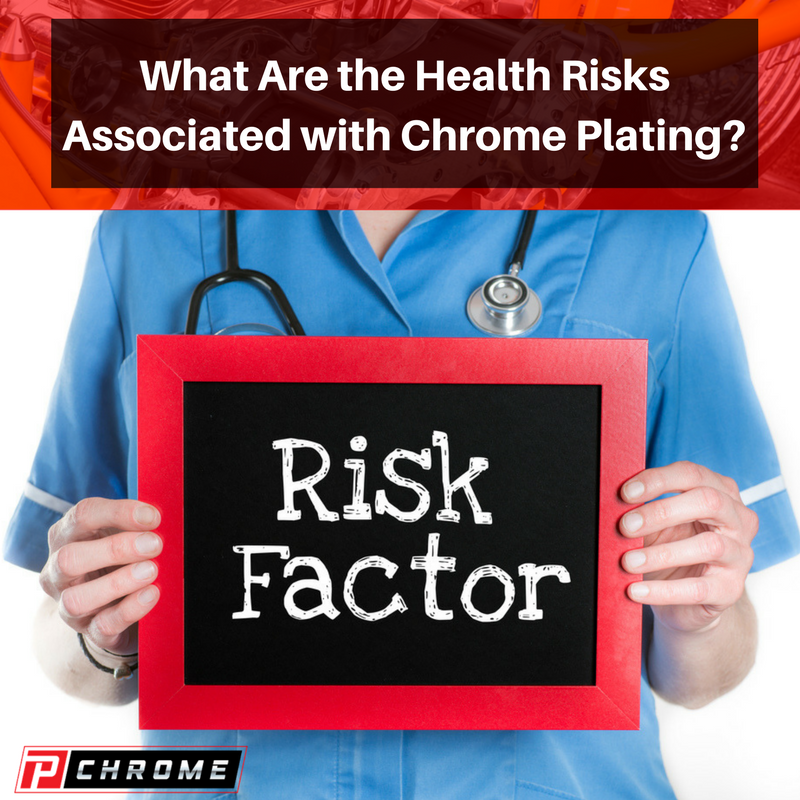Hexavalent chromium, which is also known as chromic acid, is used in the chrome electroplating process for finishing metal. It is highly toxic and must be handled carefully. The health risks associated with chrome plating are numerous. People may develop cancer and suffer damage to their kidneys, lungs, eyes, skin, livers and respiratory systems. Because of the health risks associated with chrome plating, it makes sense for people to choose PChrome spray chrome systems as a much more health-friendly option.
Industrial sources of hexavalent chromium
In addition to chrome plating, hexavalent chromium is also found in other industrial sources. Some of these include the following:
- Chromate pigments that are used in paints, plastics, inks and dyes
- Particles that are released into the air when ferrochromium ore is smelted
- Chromates that are added because of their anti-corrosive nature to primers, paints and other surface coatings
- Fumes that are given off during welding processes with stainless steel or chromium alloys
- As an impurity in Portland cement
Serious health conditions related to hexavalent chromium exposure
People who work with hexavalent chromium or who are otherwise exposed to it may develop lung cancer if they inhale it. They may also suffer respiratory system damage to the nose, lungs and throat. People whose eyes and skin are exposed to high concentrations of hexavalent chromium may suffer damage to them.
Hexavalent chromium’s impacts on the lungs, nose and throat
Workers who breathe in high levels of hexavalent chromium may suffer from irritation of the nose and throat. They may experience symptoms including sneezing, coughing, running noses, itching and burning. Repeated or lengthy exposures may cause sores in the nose, resulting in nosebleeds. When the damage is severe, the nasal septum may develop a perforation in it. Over time, some workers develop allergies to hexavalent chromium. For them, inhaling the particles may cause asthma symptoms.
How hexavalent chromium affects the skin
Workers may develop allergic skin reactions from handling solids or liquids that contain hexavalent chromium. After an allergy develops, a worker may suffer an itchy, red skin rash that becomes thick and crusty with prolonged exposure. Allergic contact dermatitis is more severe with repeated skin contacts and is long-lasting. People whose skin comes into direct contact with hexavalent chromium may suffer skin irritations even if they are not allergic. Direct exposure can cause chrome ulcers, which are small, crusty skin sores with rounded edges. These sores take a long time to heal and leave scars behind.
How workers can be exposed to hexavalent chromium
Workers may accidentally inhale hexavalent chromium in the air as a fume, dust or mist. This may happen when they are producing chromate powders and pigments, chromic acid, dyes, chromium catalysts and coatings. They may also be exposed to hexavalent chromium when they are working near chrome electroplating. People whose work involves hot work and welding of stainless steel, chrome-coated metal parts and high-chrome alloys may also be exposed. Finally, workers who remove paints that contain chromate or who apply them may be exposed to hexavalent chromium.
Because of the dangers associated with hexavalent chromium, the Occupational Safety and Health Administration has numerous regulations in place that are designed to help protect workers from exposures to the substance. A new standard released by OSHA requires employers to limit the average hexavalent chromium exposure in the workplace over an eight-hour time-weighted average to 5 micrograms or less for every cubic meter of air. Employers must also periodically monitor the workplace every six months if testing shows worker exposure at or above 2.5 micrograms per cubic meter of air. Workers are supposed to be provided with proper protective equipment and clothing if there is a potential danger of skin or eye contact. Employee rotation systems to comply with the exposure limits are not allowed. Employers must also give their workers respiratory protection as called for in the OSHA standard and offer medical examinations to workers within 30 days of their hiring date and annually as well as to those who experience symptoms or who are exposed during emergency situations. Finally, medical examinations must also be offered at an employee’s termination.
The dangers of hexavalent chromium exposure are numerous. People may want to consider using PChrome spray chrome systems as much safer alternatives. To learn more, contact PChrome today.

